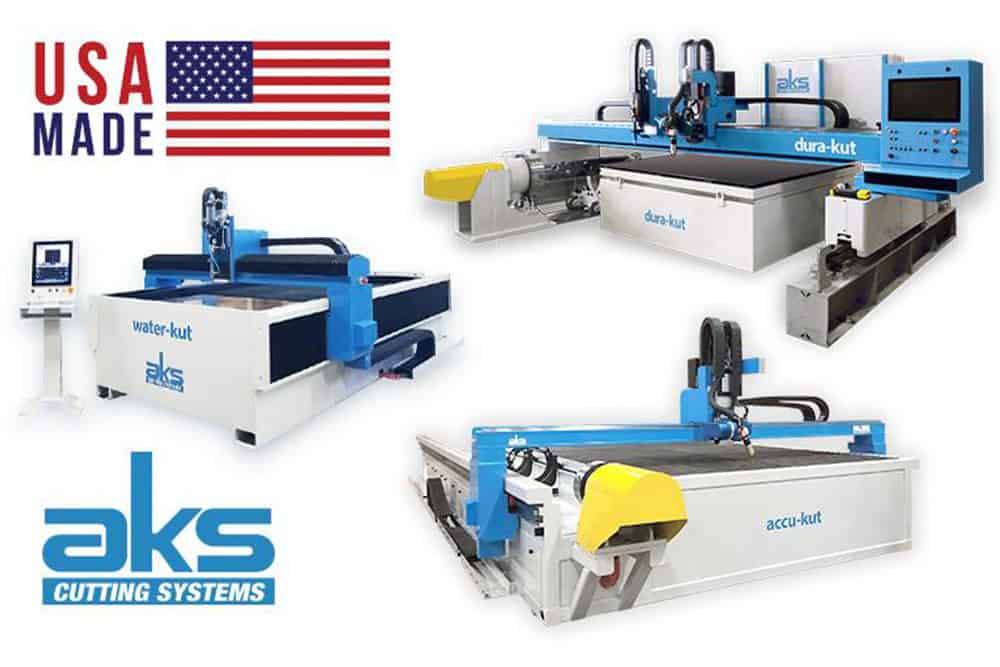Deciding between plasma, waterjet or laser technology for your operations can get overwhelming.
By Stan Pollack
Each cutting technology has a long list of pros and cons. However, the most important considerations are your long-term needs and your customers’ needs. Each cutting technology has critical differences, ranging from material and application limitations to cost considerations. We frequently get asked about the differences between lasers, plasma and waterjet cutting machines, so here’s a quick overview.
Plasma, like lasers, cuts through materials faster than waterjets. Unlike lasers, plasma can cut through very thick materials. However, since plasma cuts with heat, there is a significant heat-affected zone on materials, so some sort of secondary finishing is required in many cases. Waterjets leave a perfect finish on the materials they cut since they do not cut with heat, so there is no heat-affected zone and no metallurgical changes occur in the material being cut. Additionally, waterjets usually cut with far higher precision than plasma, +/- .003 to +/- .010 versus +/- .005 to +/- .030.
The versatility of waterjets expands a job shop’s capabilities beyond what’s possible using plasma or lasers. While many cutting applications have their limitations, waterjets can cut virtually any material. They are ideal for cutting tough, lucrative materials such as titanium, Inconel, brass, steel, aluminum, glass, stone and composites.
Laser cutting focuses the laser beam on a specific location on a piece of material, allowing the laser to etch just the surface of a piece of metal or, if the point is set at a lower level, to cut through the material. The energy from a laser produces temperatures hot enough to melt the material or cut the material, and then uses assist gas to blow away the molten material. Benefits of lasers include quick setup time, no special tooling requirements, no secondary operations required on thin materials, quick prototyping, and high-quality edges on thin materials.
Two Machines for the Cost of One
When selecting a cutting system, there are other factors that should be considered. The upfront capital cost of a laser is far more than that of a plasma or waterjet. Many young companies get excited about a laser machine, spending in excess of $500,000, only to find out they can’t keep it busy, the laser doesn’t offer the flexibility they need, or they’ve under-invested in terms of capabilities and their laser only accounts for 15-20 percent of their business. On the other hand, they could have purchased both a plasma and waterjet for the same cost of one laser cutter and had the flexibility and capability to complete far more programs.
The only thing a laser can do that a waterjet and plasma cannot do is high production. Yet, doing high production with a laser requires robotic devices to load and unload materials automatically, which can help reduce cost per part. If you have enough safeguards in the machine to run it without human operation, and you’re running high-production programs, a laser may make sense. Bear in mind though, investing in robotic equipment requires an enormous expense, anywhere from $3 million to $5 million, so you must have the volume to sustain that business.
The upfront capital investment of a laser, compared to the costs of a plasma or waterjet, means you must evaluate your needs and know the strengths, weaknesses and benefits of each cutting method. To determine your overall true investment costs, think long term and look to invest in cutting machines that will give you the greatest versatility. Being efficient with your purchases, thinking long term and going with a more versatile set of machines will give you the greatest return on your investment.
To talk through options and which cutting machine(s) would be best for your business, contact an AKS expert today.
